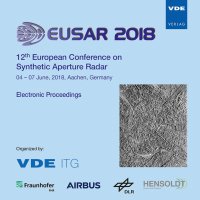Three Dimensional SAS Motion Error Estimation employing Near-Field Beamforming
Conference: EUSAR 2018 - 12th European Conference on Synthetic Aperture Radar
06/04/2018 - 06/07/2018 at Aachen, Germany
Proceedings: EUSAR 2018
Pages: 6Language: englishTyp: PDF
Personal VDE Members are entitled to a 10% discount on this title
Authors:
Qiao, Ziliang (Technical University Darmstadt & City University of Applied Sciences, Bremen, Germany)
Kraus, Dieter (City University of Applied Sciences, Bremen, Germany)
Abstract:
The three translational motion errors of Synthetic Aperture Sonar (SAS) platform are estimated simultaneously based on the Micronavigation approach. At first the nonlinear relationship between the propagating time difference and the motion error is given, which is usually simplified using Phase Center Approximation (PCA). However, this conversion from bi-static to mono-static actually brings unaffordable systematic error into motion estimation. For this reason, a multi-step near-field beamforming is performed on each ground range patch to remove the aforementioned systematic error. After that, the Time Delay Estimation (TDE) between the signal segments of two associated channels in two consecutive pings is implemented with respect to selected ground range patches. Due to the equal importance of delay estimate and the range-delay curve, all the time delay estimates are fed into a nonlinear fitting model to eliminate the outliers influence. An empirical model of the range-delay curve is proposed for the curve fitting, and Least Square (LS) criterion is applied to evaluate the motion error estimation. This optimization problem is solved iteratively using Newton-Raphson method. SAS simulations proved the usefulness of multi-step near-field beamforming, and verified the feasibility of the joint estimation of translational motion errors.


